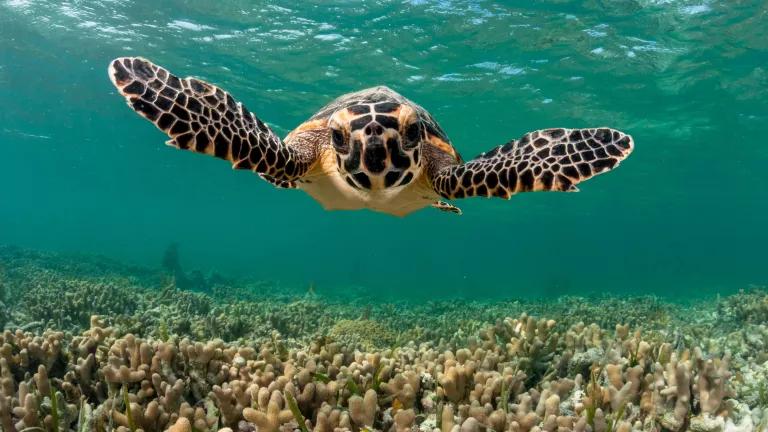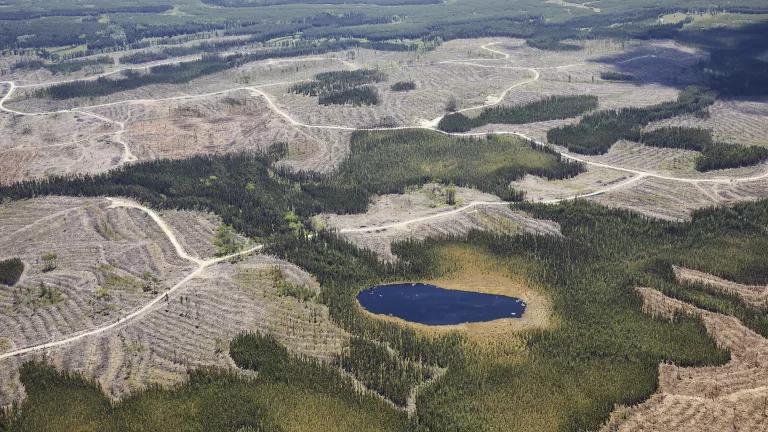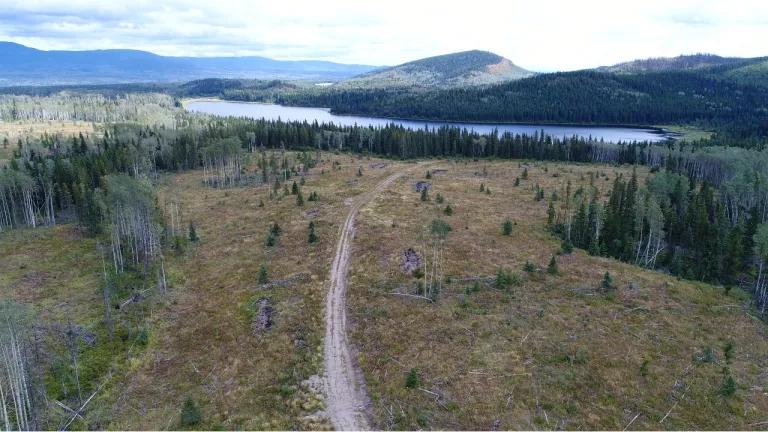Final Biodiversity Framework Fails to Meet the Moment
Despite dire warnings about mass extinction and climate change impacts in the very near future, the post-2020 Global Biodiversity Framework lacks the ambition necessary to address the crises.

Early yesterday morning, the 196 nations that are Parties to the United Nations Convention on Biodiversity (CBD) finalized a set of global goals and targets meant to halt and reverse the devastating biodiversity crisis gripping our planet, end the mass extinction of species, accelerate mitigation of climate change and other threats, and set us on a new path towards harmony with the natural world by 2050.
Except the final goals and targets that were adopted won’t do any of that.
Unfortunately, the Kunming-Montreal Global Biodiversity Framework (GBF) isn’t any more ambitious than the biodiversity goals and targets that were adopted by the Parties to CBD more than 10 years ago in Aichi, Japan, virtually none of which were met. And, once again the global North has failed completely to acknowledge its misdeeds from the past and shoulder the responsibility it holds to address the problems that it, in large part, has created.
Right off the bat, the Framework starts with a whimper. The 2050 Goals, which should reflect what “Living in Harmony with Nature” will look like in about 30 years, instead reflect essentially what things look like now—total status quo. They would only “maintain or enhance” the area of naturally functioning ecosystems around the planet overall, and, incredibly, would halt the extinction of species not immediately, or in a few years, but by 2050, almost thirty years from now.
The 2019 IPBES Global Assessment Report, upon which the entire Global Biodiversity Framework is based, said that about one million species face extinction, many within decades. Letting everything go extinct over the next 30 years is certainly one way to halt extinction by 2050. Target 4 on species conservation was amended at the last minute to say something about trying to halt extinction by 2030, but still, it’s far from a specific target to halt extinction now.
Halting extinction immediately upon adoption of the Framework, was what many ambitious countries including Panama, Nigeria, Canada, New Zealand, and Niger had advocated for all along. The world’s largest science-based organizations like World Wildlife Fund, IUCN, BirdLife, and Wildlife Conservation Society all said stopping extinction right now was not only vital, but achievable. But powerful players like the United Kingdom, Russia, and the European Union fought such language, choosing to let species go rather than to do what is required to save them.
The much celebrated “30 by 30” target, which was among the easiest of the biodiversity targets to message to the public, also wound-up weak, though it could have been worse. It ultimately lacks the clarity of purpose and direction it needs to ensure that 30 percent of land and marine areas are protected in fact and not just protected on paper. Language calling for environmentally damaging activities such as oil and gas drilling, bottom trawling, clear-cutting, commercial fishing, and a panoply of others be prohibited in order for those areas to count towards the 30 percent target was omitted, despite the efforts of the Blue Leaders countries led by Panama and Nigeria, among others. If it wasn’t for these leadership countries, the target might not have been adopted at all.
The 2010 Aichi target calling for 17 percent protected areas on land and 10 percent in the ocean by 2020 was one of the few that was met, technically, though experts agree that a lack of quality standard in the target meant that few of those protected areas actually achieved the biodiversity protections for which they were designated. The new 30 by 30 target seems destined for the same fate.
NRDC and partners had been arguing for years that a target specifically addressing the impacts of wildlife trade on both biodiversity and human health must be included in the Framework. Target 5, which at one time included strong, unambiguous language to eliminate wildlife exploitation, use, and trade that is illegal, ecologically unsustainable, or that poses a risk of pathogen spillover, was turned into a vaguely positive statement about the sustainable use of wild species, as long as it is legal and sustainable, only seeking to “reduce” the risk of another zoonotic disease pandemic like COVID-19 that has killed more than 6.7 million worldwide, and counting.
The IPBES Global Assessment said clearly that direct exploitation of species is the number one factor driving marine species to extinction and the second biggest factor for land species, just barely behind habitat loss. And it’s the biggest driver of the risk of novel pathogen spillover from wildlife in trade to humans and livestock, predominantly from birds and mammals. Gabon, The Philippines, Panama, Nigeria, Niger, Chile, and some others pointed this out again and again, but the final GBF text only says, “reducing the risk,” not “eliminating the risk.” It’s a downright abdication of responsibility to protect us all from another global pandemic by the most powerful governments of the world. Again, influential players like the EU and Australia were the most notable opponents to the “pathogen spillover” text.
Finally, and most troublingly, the GBF completely fails to mobilize the resources that are necessary to accomplish even the weakest of the goals and targets by 2030. With a biodiversity funding gap of more than $700 billion, it only calls for a slight increase in funding to $200 billion per year. And worse, it disrespects the needs of countries in the Global South for whom the biodiversity and climate crisis presents the most real and immediate threat to the lives and livelihoods of their citizens – a threat caused by centuries of colonialism and greed among the Global North.
Developing countries asked for a dedicated Global Biodiversity Fund and $100 billion per year to protect the vital forests and other landscapes and species in the megadiverse south. What they got was $20 billion to start, maybe $30 billion eventually, and administered by the Global Environmental Facility, which takes years to distribute funds and favors projects in economic powerhouses like China and Brazil over the world’s poorest countries where the funds are needed most.
The document does call for an end to about $500 bIllion worth of subsidies that are harmful to biodiversity, which is one of the most important ways in which we can address biodiversity loss quickly, but it fails to call for a redirection of those subsidies into nature-positive incentives. Thus, most of the more than $700 billion gap in the amount needed to address the biodiversity crisis and the amount provided will remain, making accomplishing the GBF goals and targets nearly impossible.
Something remarkable did happen at the more than two-week negotiation, however. Key players from the Global South emerged and not only raised their voices during the talks, but really drove many of the positive changes that were added in the final day and hours, making the Framework better, even if not robust enough. Panama was a constant voice for ambition, much to the annoyance of the deal-at-any-cost GBF Co-chairs, and Nigeria and the rest of the 15-country block of African countries from the Economic Community of West African States (ECOWAS) led the fight for equity in financing and comprehensive solutions to the biodiversity crisis. The line-by-line, English-only negotiation was rigged against them from the start, but Niger, the least developed country on Earth if global indicators are to be believed, stood up and fought again and again for the ambition and funding they desperately need.
The power in Africa certainly seems to be shifting north and west away from South Africa and the southern block, and mid to low-income countries in Latin America, Southeast Asia, and the Pacific are gaining traction as well. By 2030, if not before, these areas of the Global South could be among the more powerful voices in these and other international dialogues.
Given the overall lack of appetite for new ways of thinking, it’s almost a certainty that in 2030 the Parties who drove this lackluster outcome will be facing an even worse situation and wondering what went wrong. With notable exceptions, they will have failed not because they were too ambitious, but because they were too hesitant to break with the failed systems of the past and chart a new course for nature and humanity.


